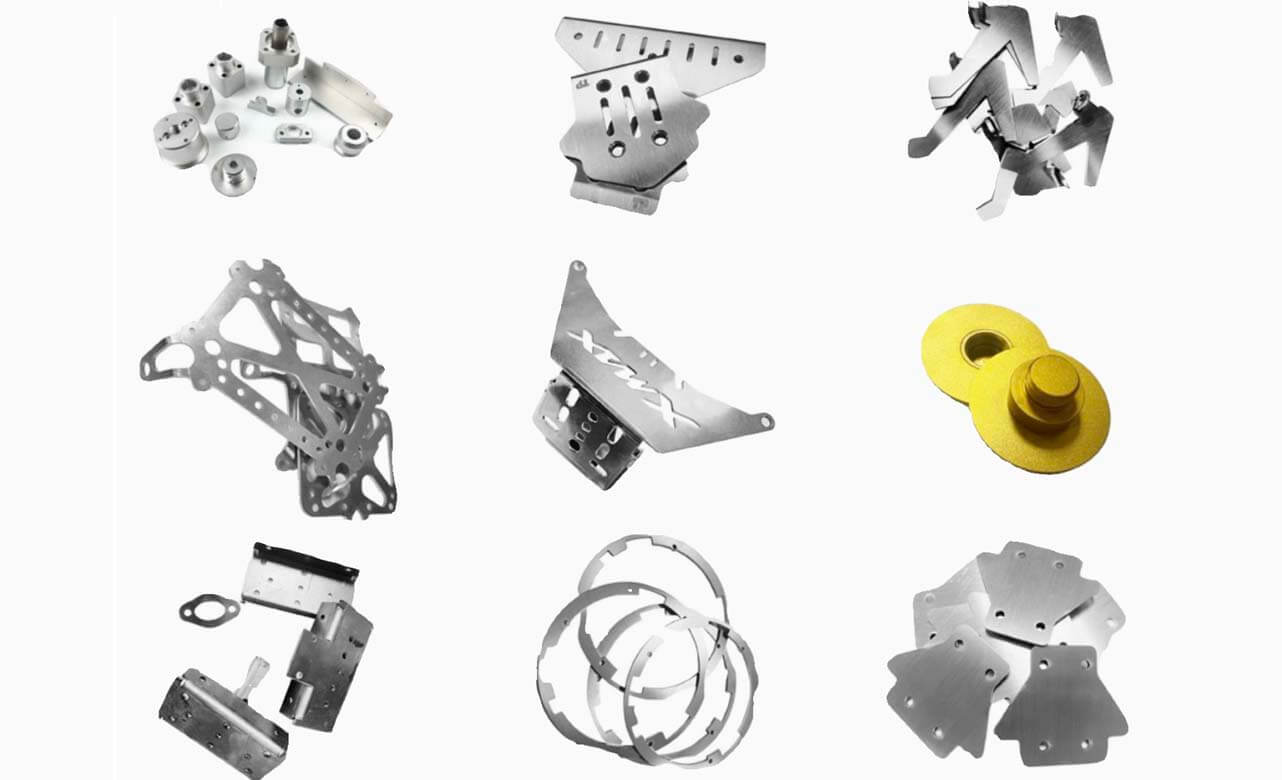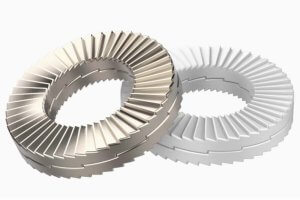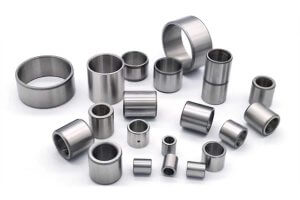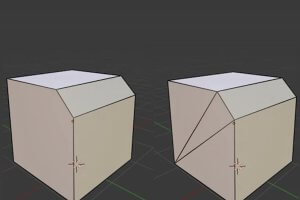The Power of CNC Machining in Shaping Stainless Steel Sheet Metal
Stainless steel sheet metal has become a cornerstone material across many industries, prized for its durability, corrosion resistance, and aesthetic appeal. From automotive and aerospace to construction and food processing, stainless steel sheet metal meets the need for a versatile, high-strength material that performs reliably in demanding environments. However, it is the integration of CNC (Computer Numerical Control) machining that has truly transformed how stainless steel sheet metal is utilized, enhancing its applications by delivering a level of precision and efficiency unattainable with traditional methods.
When I first saw the combination of CNC machining with stainless steel sheet metal, it was remarkable how CNC systems enabled precise, repeatable, and complex operations. In this guide, I’ll share how CNC machining has changed stainless steel sheet metal fabrication, offering insights into its applications, industry benefits, and technical techniques to maintain high quality in production.
Characteristics of Stainless Steel Sheet Metal and CNC Processing Advantages
Stainless steel sheet metal offers a unique set of characteristics that make it ideal for CNC machining. Its high resistance to corrosion, strength-to-weight ratio, and attractive finish make it a go-to material for applications that demand longevity, performance, and aesthetics.
Key Properties of Stainless Steel Sheet Metal
| Property | Description |
|---|---|
| Corrosion Resistance | Withstands rust and oxidation, even in harsh environments, extending product lifespan. |
| Durability | Offers an excellent strength-to-weight ratio, making it suitable for structural and load-bearing applications. |
| Hygiene | Non-porous and easy to sanitize, ideal for food processing, medical equipment, and cleanroom environments. |
| Aesthetic Appeal | Sleek, reflective finish adds to its visual appeal, commonly used for design and architectural elements. |
| Thermal Resistance | Retains integrity across a broad temperature range, ensuring durability in high-heat applications. |
Advantages of CNC Machining Stainless Steel Sheet Metal
Applying CNC machining to stainless steel sheet metal allows for unmatched precision and efficiency, resulting in high-quality, complex parts. CNC machining also enables repeatable, consistent manufacturing processes, which is especially important for industries with high standards for reliability and quality control.
- High Precision: CNC systems execute precise cuts, holes, and contours, ensuring tight tolerances and accurate results.
- Repeatability: CNC machining can replicate exact specifications across multiple units, making it ideal for mass production.
- Complex Designs: CNC allows for intricate shapes and complex geometries that would be challenging or impossible with manual methods.
- Cost Efficiency: While CNC machines require an initial investment, they reduce production costs in the long run through faster production times and minimized material waste.
These advantages make CNC machining of stainless steel sheet metal a preferred method across industries where quality, precision, and efficiency are paramount.
Applications of CNC Machined Stainless Steel Sheet Metal in Various Industries
The versatility and durability of CNC-machined stainless steel sheet metal have enabled its use across numerous industries, each with unique needs and standards.
2.1 Architecture and Interior Design
In architecture and interior design, stainless steel sheet metal combines aesthetic appeal with structural integrity. It’s used in applications ranging from structural elements to decorative features, benefiting from CNC’s ability to create unique, custom shapes and precise designs.
| Application | Purpose | CNC Benefit |
|---|---|---|
| Wall Panels | Adds both structural support and aesthetic appeal | Allows for consistent patterns and durable finishes |
| Stair Railings | Balances safety with design | Offers customizability and resistance to corrosion |
| Decorative Facades | Enhances building aesthetics | Enables intricate cutouts and unique patterns |
With CNC machining, stainless steel sheet metal can be precisely tailored to fit complex architectural designs, helping buildings stand out while maintaining durability.
2.2 Automotive and Transportation Manufacturing
The automotive industry has long valued stainless steel for its strength and resistance to both impact and corrosion. CNC machining enhances stainless steel’s versatility, enabling manufacturers to produce lightweight yet durable components that can withstand continuous use.
| Component | Purpose | CNC Benefit |
|---|---|---|
| Body Panels | Protection and aesthetics | Achieves tight tolerances for a custom fit |
| Frame Structures | Provides structural strength | Ensures consistent dimensions, vital for reliability |
| Exhaust Components | Withstands high temperatures | Allows for precise cuts and high heat tolerance |
With CNC, automotive engineers achieve the perfect balance between stainless steel’s strength and the lightweight design needed for fuel efficiency, creating parts that perform well under both high stress and temperature.
2.3 Industrial and Food Processing Equipment
Stainless steel’s non-reactive properties make it perfect for industrial and food-processing applications, where hygiene, resistance to contamination, and durability are critical.
| Equipment Type | Industry | CNC Advantage |
|---|---|---|
| Mixing Tanks | Food and Beverage | Smooth surface to prevent contamination |
| Pharmaceutical Equipment | Medical and Pharmaceutical | Precise cutting for seamless integration |
| Conveyor Belts | Food Processing | Durable and easy to clean |
CNC machining ensures that the stainless steel surfaces remain smooth and sanitary, meeting stringent hygiene requirements essential in these industries.
Tips and Techniques for CNC Machining Stainless Steel Sheet Metal
CNC machining stainless steel sheet metal requires specific techniques to maintain both material quality and machining efficiency. Due to the hardness and potential for heat distortion in stainless steel, careful planning, and execution are essential for achieving high-quality results. Here’s an expanded look at best practices for CNC machining stainless steel:
Essential CNC Machining Tips
- Tooling Selection:
Carbide Tools: Due to its hardness, stainless steel requires durable, wear-resistant tooling. Carbide-tipped tools are ideal for stainless steel machining, as they can withstand the material’s abrasiveness while maintaining a sharp edge.
High-Speed Steel (HSS) Alternatives: While less durable than carbide, HSS tools are sometimes used for light-duty applications or prototyping. Coated HSS can provide a cost-effective option for lower-speed, simpler projects. - Feed Rate and Cutting Speed:
Optimal Speeds: Lower cutting speeds, combined with moderate feed rates, help reduce heat buildup, which is a common issue when machining stainless steel. Excessive heat can lead to work hardening and material distortion.
Experiment with Depths of Cut: Adjusting the depth of cut is essential for maximizing machining efficiency while maintaining the surface finish. Generally, shallower cuts prevent tool wear and help achieve a smoother finish, especially on thin stainless steel sheets. - Coolant Application:
Flood Coolant: Stainless steel tends to retain heat, so effective cooling is essential. Flood coolants provide a steady cooling stream that helps control temperatures and reduce friction, which is critical for preventing warping and prolonging tool life.
Misting and Air Blasts: For projects where flood coolant isn’t feasible, misting systems or compressed air can offer effective alternatives. Misting provides cooling without excessive liquid, while air blasts remove chips and keep the work area clear. - Surface Finish Control:
Polishing: For industries like architecture and automotive, polishing is often used post-machining to enhance the finish of stainless steel parts. Polishing removes minor surface imperfections and adds a reflective quality, enhancing visual appeal.
Brushing: Brushed stainless steel offers a matte finish, which is commonly used for appliances and architectural panels. The brushing process provides a distinct grain, creating a professional look and a surface less prone to showing fingerprints and scratches. - Chip Management:
Efficient Chip Removal: Stainless steel chips can be particularly challenging due to their toughness and size. Proper chip evacuation is essential to avoid tool damage and maintain machining efficiency. Using compressed air or a specialized chip removal system helps keep chips from obstructing the tool path.
Optimizing for Production Quality
High-quality CNC machining relies on balancing speed and accuracy with material considerations. The following quality control strategies can improve production quality:
- Real-Time Monitoring: Modern CNC machines are equipped with sensors and monitoring systems that track variables like tool wear, temperature, and machine vibration. Real-time monitoring helps detect and prevent issues before they compromise quality.
- Trial Runs for New Parts: Performing a trial run or sample production for new designs helps identify potential machining challenges and ensures the final product meets specifications.
- Maintenance of CNC Machines: Regular maintenance, including tool changes, lubrication, and calibration, ensures the CNC machine performs at peak efficiency, which is crucial for stainless steel machining.
By incorporating these techniques, manufacturers can achieve the desired quality, accuracy, and durability in stainless steel sheet metal components.
How to Choose the Right CNC Stainless Steel Processing Services
When selecting a CNC processing provider for stainless steel sheet metal, it’s essential to ensure they have the experience, equipment, and technical capabilities required to meet the demands of your project. Here, I’ll delve into key factors and offer a detailed guide to help you make the right choice.
Key Specifications to Evaluate
The specifications and capabilities of a CNC provider can greatly impact the quality, durability, and efficiency of your project. Here’s a closer look at the most crucial factors:
| Specification | Description | Importance |
|---|---|---|
| Cutting Thickness | The provider’s CNC machinery should be capable of handling the required range of sheet metal thickness, which typically ranges from 0.5mm to 10mm for most applications, but could go higher depending on the project. | Essential for ensuring material compatibility. |
| Tolerance Level | Precision in CNC machining is critical, especially for applications requiring tight tolerances. Providers should be capable of meeting specific tolerance requirements, such as ±0.01mm, to ensure parts fit accurately within assemblies. | Important for high-stakes applications. |
| Processing Speed | Processing speed affects both the project timeline and cost. Providers with efficient, high-speed CNC machines can manage larger production volumes while meeting deadlines. | Crucial for large or time-sensitive projects. |
| Surface Finishing Options | The ability to provide post-processing options, like polishing, brushing, sandblasting, and anodizing, allows for customized finishes that enhance the visual and functional properties of stainless steel. | Enhances aesthetic and functional versatility. |
| Customization Capabilities | Each project may have specific design and technical needs. Providers that offer customization based on industry standards, unique designs, or special finishes can help you achieve the exact specifications required. | Necessary for custom and complex projects. |
Tips for Evaluating CNC Providers
Choosing a provider isn’t just about equipment; service quality and reliability are also critical factors. Here are additional points to consider:
- Experience with Stainless Steel: CNC machining stainless steel requires knowledge of its unique properties, such as hardness and heat resistance. A provider experienced with stainless steel is more likely to manage challenges like heat distortion and tool wear.
- Portfolio and Case Studies: Reviewing the provider’s past projects can provide insight into their capabilities. Many providers showcase case studies in industries like automotive, architecture, and food processing, which can help you assess their expertise.
- Quality Control Processes: Quality control is essential for maintaining consistency across parts, particularly in batch production. Inquire about the provider’s quality control processes, such as real-time monitoring, testing, and inspection, to ensure your parts meet the required standards.
- Turnaround Time and Flexibility: Flexibility in production schedules is particularly valuable if your project has tight deadlines or fluctuating demands. Providers with flexible turnaround times can adapt to your production schedule, whether for rapid prototyping or full-scale production.
- Cost Transparency: CNC processing costs can vary significantly based on material thickness, complexity, surface finish, and order volume. Choose a provider with transparent pricing, ideally offering cost breakdowns so you can understand how various factors affect the total cost.
By selecting a provider with the right capabilities and experience, you can enhance the overall efficiency, quality, and value of your stainless steel sheet metal projects.
Success Stories in CNC Machining Stainless Steel Sheet Metal
To illustrate CNC machining’s transformative impact on stainless steel sheet metal fabrication, let’s look at real-world examples from various industries. These success stories demonstrate how CNC technology meets the needs of diverse applications, from high-precision automotive parts to hygienic food processing equipment.
Case Study 1: Automotive Exhaust Components
An automotive manufacturer sought durable, heat-resistant exhaust components that could withstand the high temperatures and harsh conditions of internal combustion engines. By using CNC machining on stainless steel sheet metal, they were able to produce custom-fitted parts that met both durability and regulatory standards. CNC provided the exact specifications needed for a tight fit within the vehicle, while the stainless steel’s corrosion resistance ensured a long service life.
Outcome: Reduced need for replacement parts due to corrosion and wear, resulting in lower maintenance costs for the vehicle over time.
Case Study 2: Architectural Stainless Steel Facade
An architectural firm designed a building with a distinctive facade featuring intricate stainless steel cutouts. Using CNC machining, the stainless steel sheet metal panels were fabricated with precision cutouts and smooth edges, creating a unique visual effect. CNC technology allowed for the exact replication of complex patterns across multiple panels, ensuring consistency and aesthetic appeal.
Outcome: The CNC-machined stainless steel panels provided both durability and a striking appearance, requiring minimal maintenance over the building’s lifespan.
Case Study 3: Food Processing Equipment Manufacturer
A food processing equipment manufacturer needed stainless steel mixing tanks with seamless, easy-to-clean surfaces. Using CNC machining, they produced smooth, hygienic tanks that met industry standards for sanitation. The precision offered by CNC ensured that all welds and edges were smooth, preventing contamination and making cleaning easier.
Outcome: The hygienic design helped the client meet regulatory requirements and improved the overall efficiency of their cleaning processes, leading to a longer equipment life and fewer shutdowns for maintenance.
Case Study 4: Medical Device Components
A medical device company required stainless steel sheet metal parts for surgical instruments that demanded extreme precision. CNC machining allowed for highly accurate cuts and finishing, ensuring the parts could be reliably used in critical healthcare settings. The stainless steel components were also polished to provide a smooth, non-reactive surface suitable for sterilization.
Outcome: The medical device company was able to deliver high-quality, durable instruments that met the stringent standards of the healthcare industry, improving safety and reliability for end users.
These case studies highlight the versatility of CNC-machined stainless steel sheet metal across various industries, showing how CNC technology meets industry-specific demands for durability, hygiene, precision, and aesthetic appeal.
Conclusion
CNC machining has revolutionized the applications of stainless steel sheet metal across various industries. By enabling high-precision cuts, repeatable processes, and the ability to work with complex designs, CNC machining expands stainless steel’s role as an essential material. From automotive to architecture, CNC-machined stainless steel sheet metal continues to make its mark, offering unmatched durability, aesthetic appeal, and functionality.
For industries looking to create reliable, high-quality components, CNC machining of stainless steel sheet metal provides a flexible, efficient, and effective solution that meets today’s rigorous standards. Through the right machining techniques, careful selection of service providers, and an understanding of stainless steel’s unique properties, companies can unlock the full potential of this versatile material.
FAQ
To further assist with commonly asked questions about CNC machining stainless steel sheet metal, here’s a FAQ section.
- Can stainless steel sheet metal be CNC machined?
Yes, stainless steel sheet metal is well-suited for CNC machining, which allows for precise cutting, drilling, and forming. CNC machining maintains high precision and is ideal for complex designs and parts. - What type of tooling should be used for CNC machining stainless steel sheet metal?
Carbide tools are recommended for stainless steel due to its hardness. Carbide tools resist wear better than other materials and maintain sharpness during high-demand machining tasks. - What is the maximum thickness of stainless steel sheet metal that can be CNC machined?
The thickness depends on the CNC equipment. Most standard CNC machines can handle stainless steel up to around 10mm, while industrial-grade machines may support thicker material. - What are common surface finishing options for CNC-machined stainless steel sheet metal?
Common finishes include polishing for a reflective surface, brushing for a matte finish, and sandblasting for texture. Each finish serves different functional and aesthetic purposes, such as reducing glare or enhancing corrosion resistance. - How much does CNC machining stainless steel sheet metal cost?
Costs vary by material thickness, complexity, and order volume. For highly customized or small-batch orders, expect higher per-unit costs. Asking for a detailed quote from the CNC provider can help estimate project costs. - How can CNC machining efficiency be improved for stainless steel sheet metal?
Optimizing cutting speeds, using efficient coolant application, and adjusting feed rates can improve efficiency. Regular tool maintenance and monitoring machining parameters are also important for maintaining consistency. - Is cooling necessary for CNC machining stainless steel sheet metal?
Yes, cooling is essential to prevent excessive heat buildup, which can damage both the material and the tooling. Flood coolants or misting systems are commonly used to maintain optimal temperatures. - How do I choose a CNC provider for stainless steel sheet metal?
Consider factors like the provider’s experience with stainless steel, available surface finishes, precision tolerance levels, and flexibility in accommodating project deadlines. - Does CNC machining affect the strength of stainless steel sheet metal?
CNC machining itself does not affect the material’s inherent strength, but improper cooling or incorrect feed rates could cause localized hardening or stress, potentially affecting part performance. - Can CNC machining stainless steel sheet metal achieve complex shapes?
Yes, CNC is ideal for creating intricate designs and complex shapes that require high precision, making it valuable for custom or highly specialized applications in diverse industries.
Other Articles You Might Enjoy
- Comprehensive Guide to CNC Machining: Carbon Steel vs Stainless Steel
Choosing the right material for CNC machining is a crucial decision for any manufacturer or engineer. Two of the most commonly used materials in various industries are carbon steel and…
- CNC Machining: Tig vs Mig Welding, Sheet Metal Fabrication Techniques( cnc machining services china Virginia)
In the world of custom fabrication and CNC machining, different techniques are used to achieve the desired results and product design. Among these processes, welding is one of the most…
- What Material Properties Need to Be Considered When CNC Machining Stainless Steel Flanges?
The CNC machining of stainless steel flanges requires a profound understanding of the material's properties to ensure high-quality, precision outcomes. This article delves into the critical material properties that impact…
- Fast CNC Machining Services for Stainless Steel Prototyping
CNC Machining and Stainless Steel in Prototyping Computer Numerical Control (CNC) machining is a critical process in the manufacturing sector, particularly for prototyping projects. It's an automated method that uses…
- How to Choose a Global CNC Machining Service Provider for Stainless Steel Flanges?
Choosing the right CNC machining service provider for stainless steel flanges is crucial to ensure high-quality products, timely delivery, and cost-effectiveness. This guide will help you understand the key factors…
- The Essential Guide to Selecting the Right Metal for CNC Machining: Stainless Steel vs. Carbon Steel
Introduction to CNC Machining and Metals In the realm of creation and manufacturing, Computerized Numerical Control (CNC) machining serves as a critical tool. It is an advanced system involving the…









